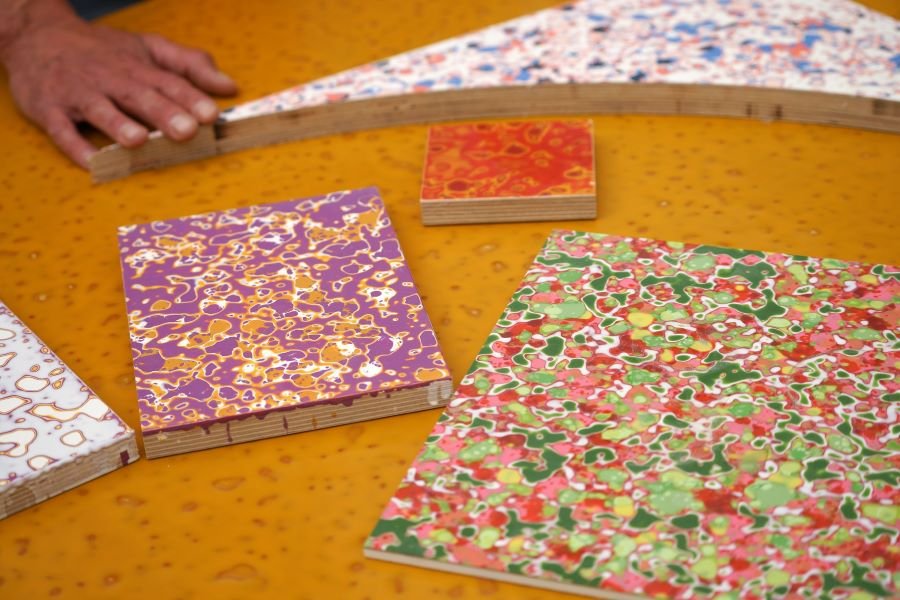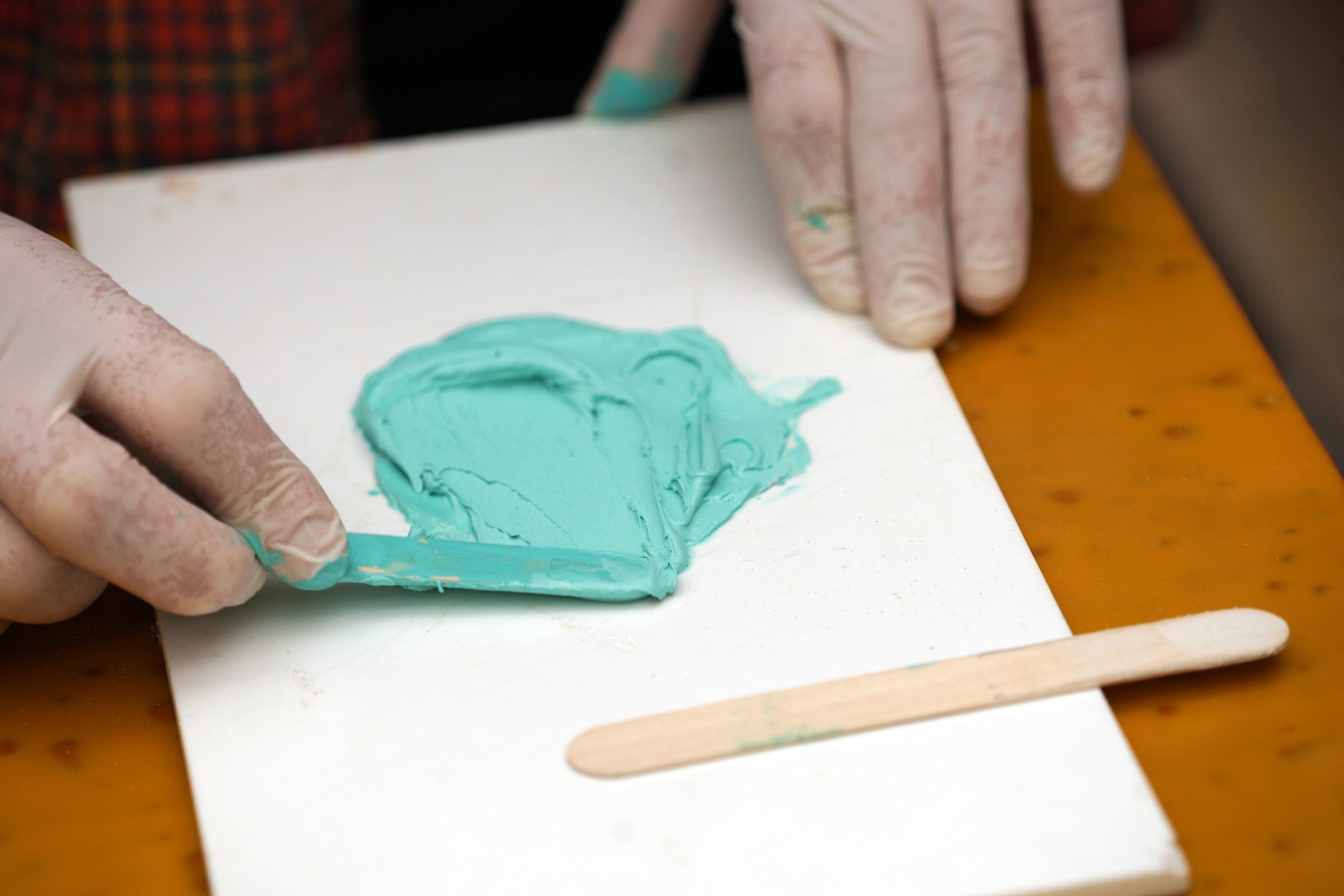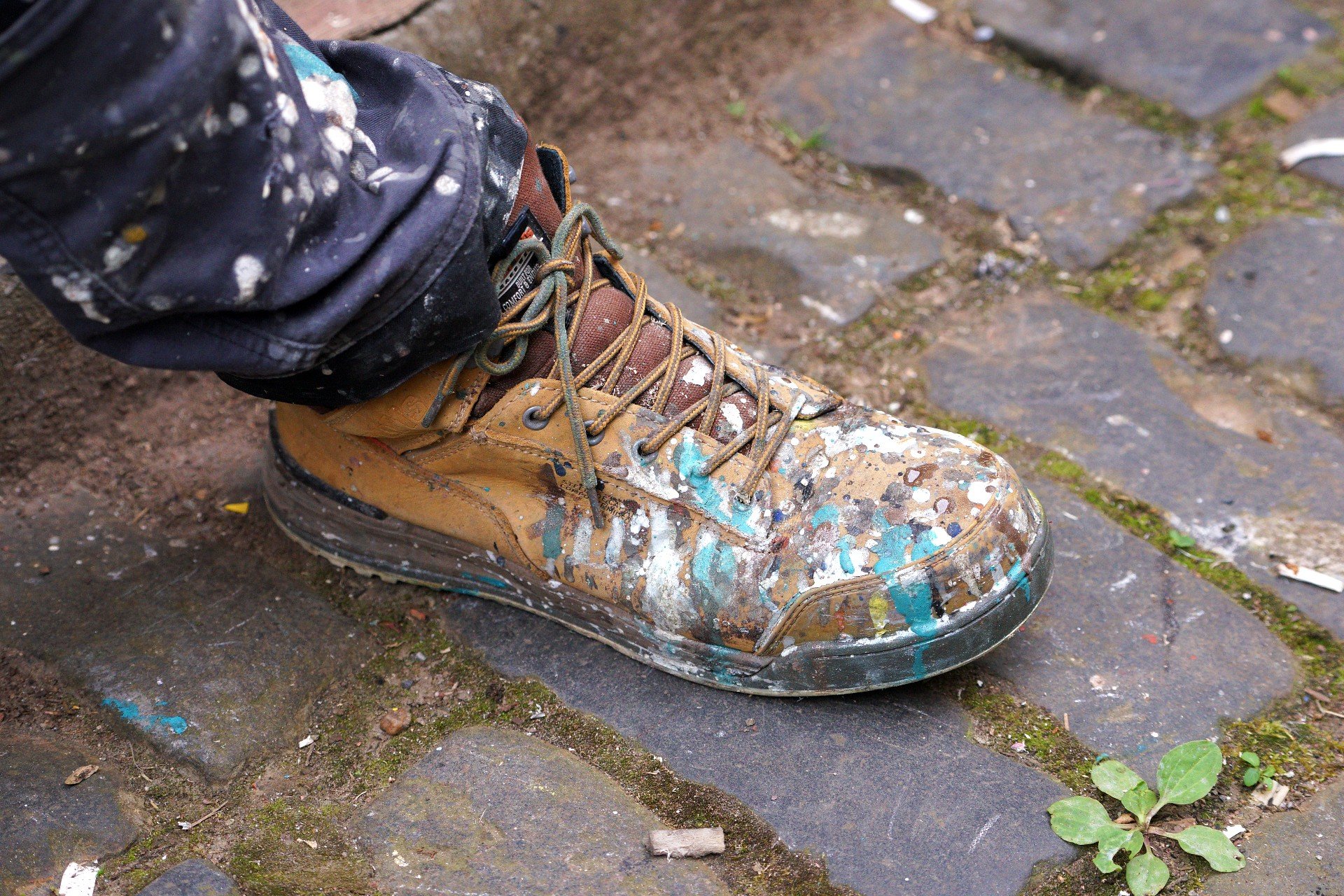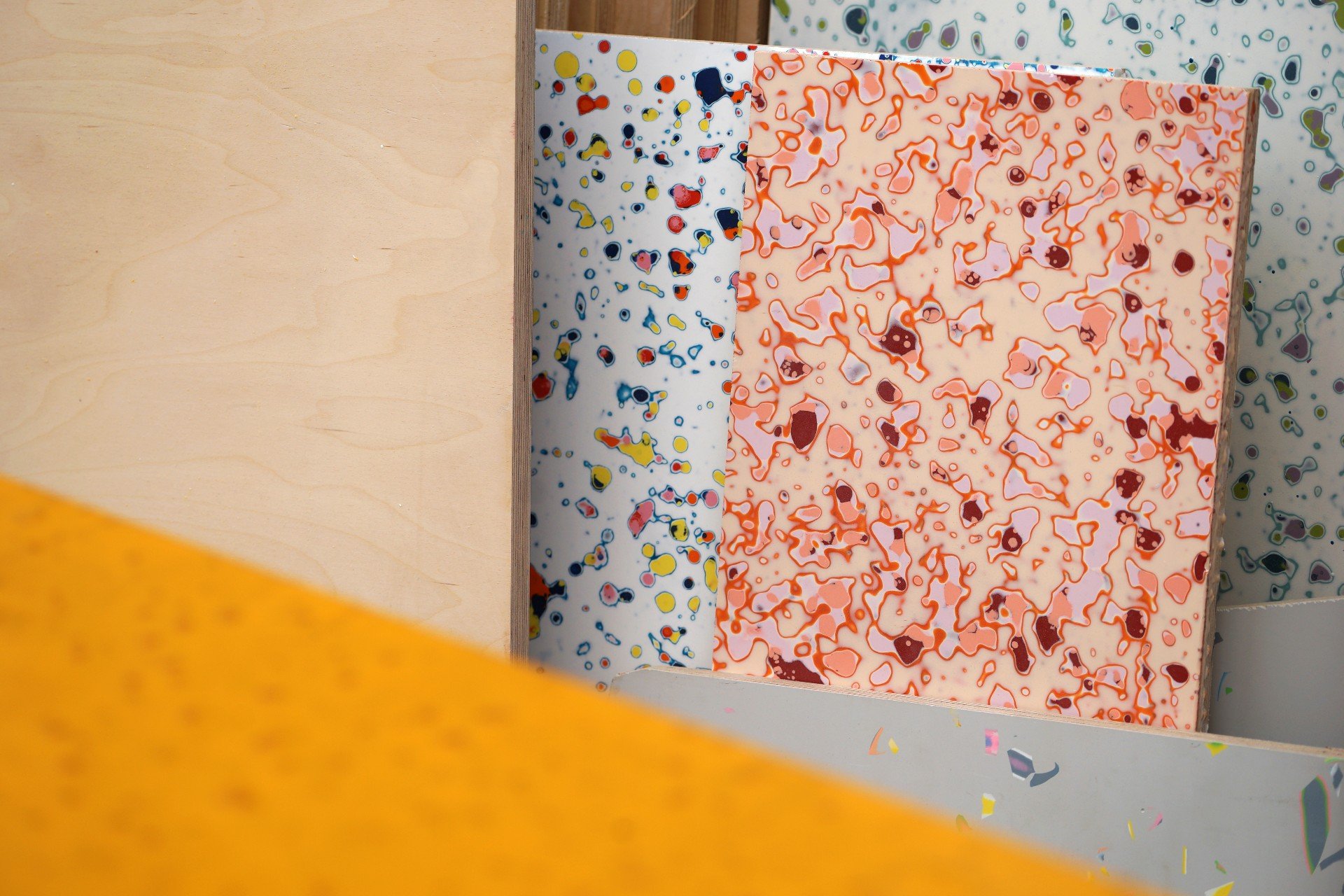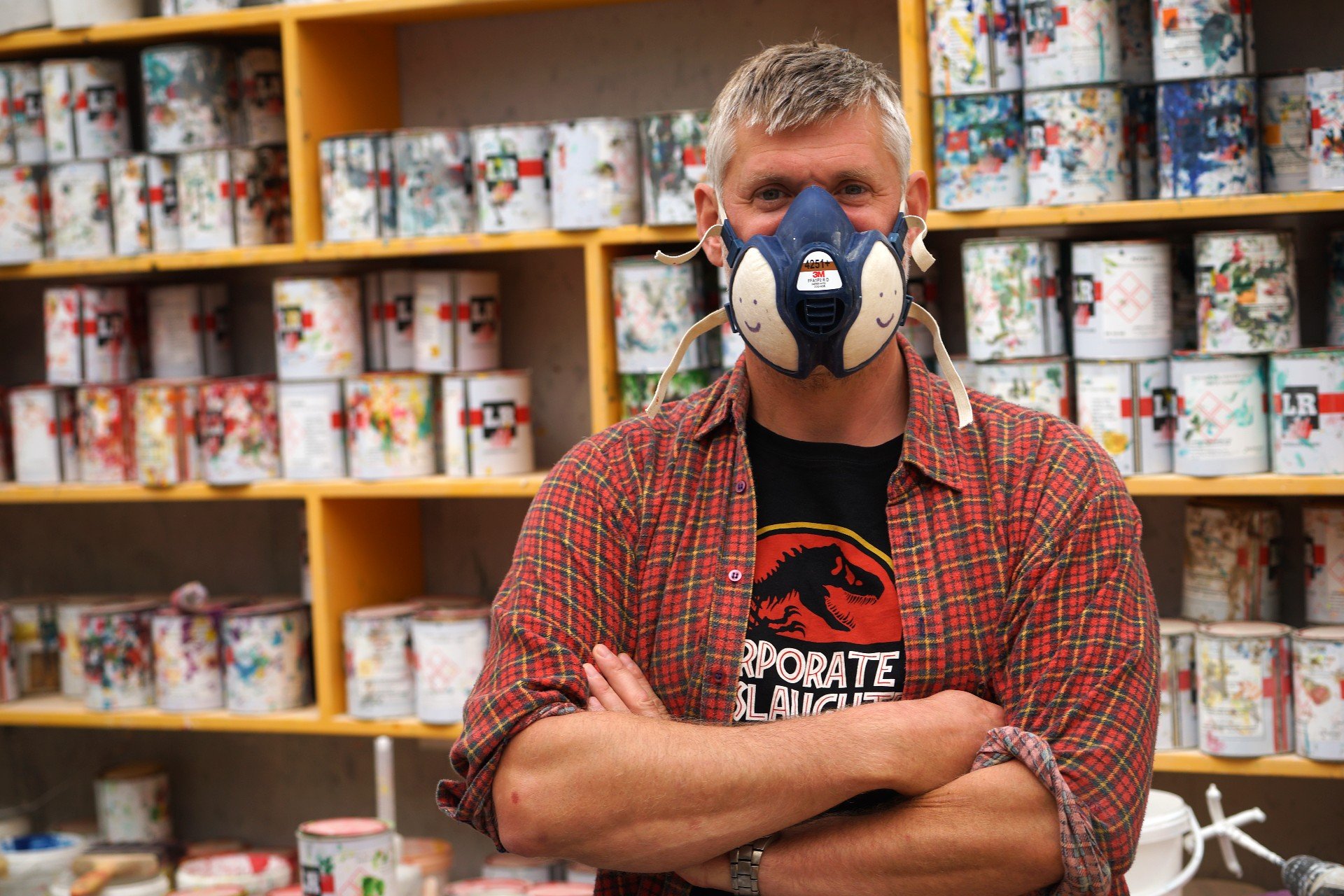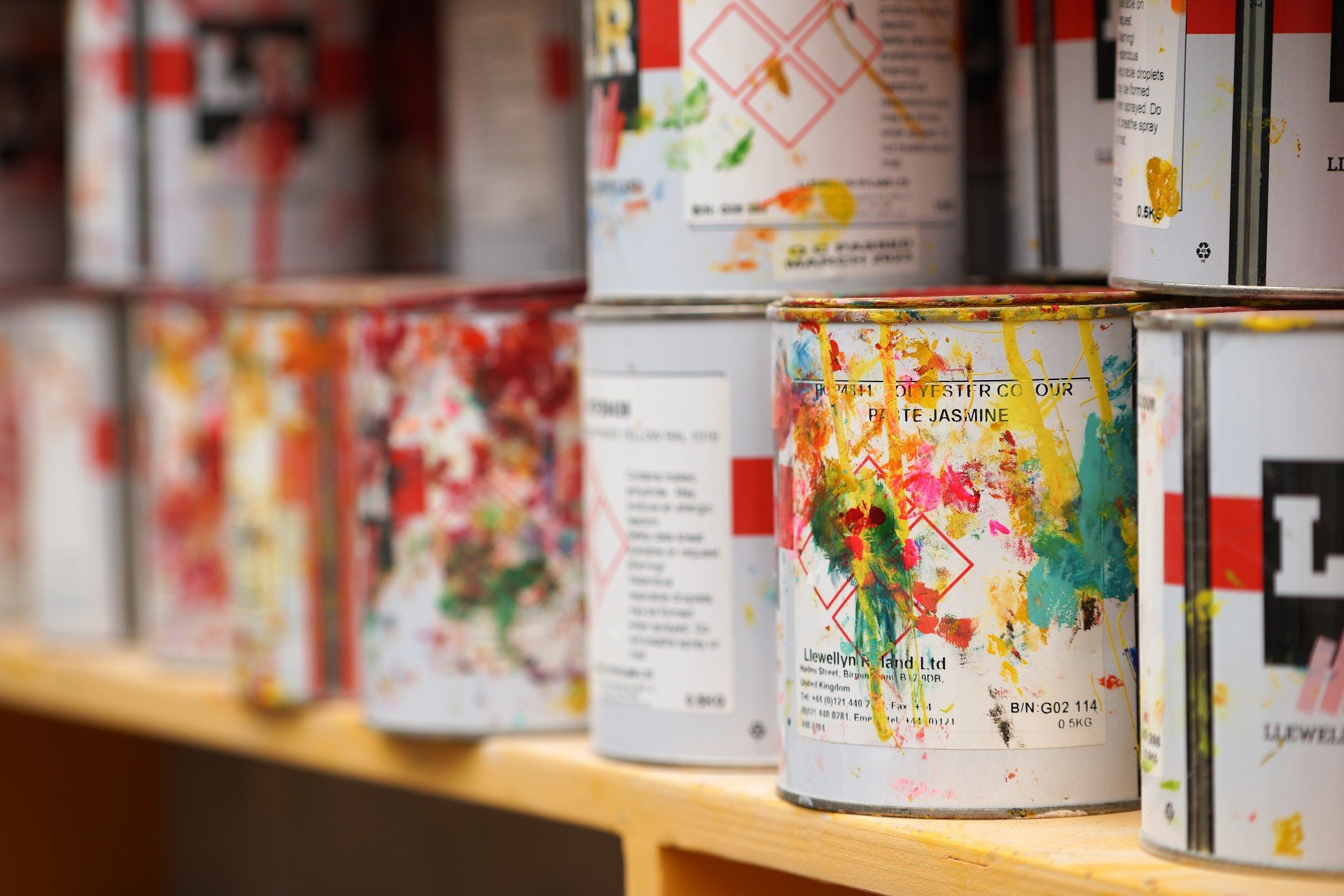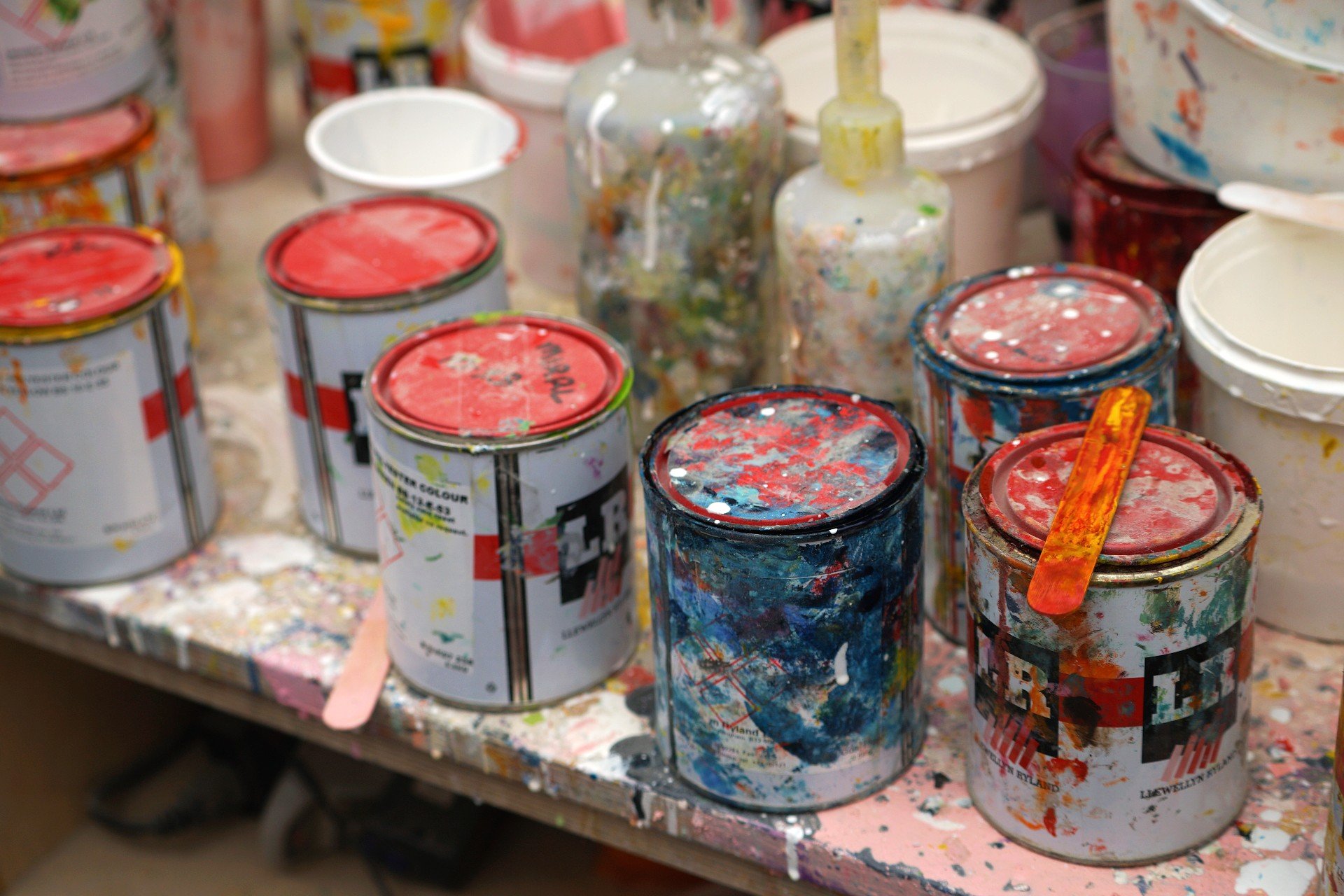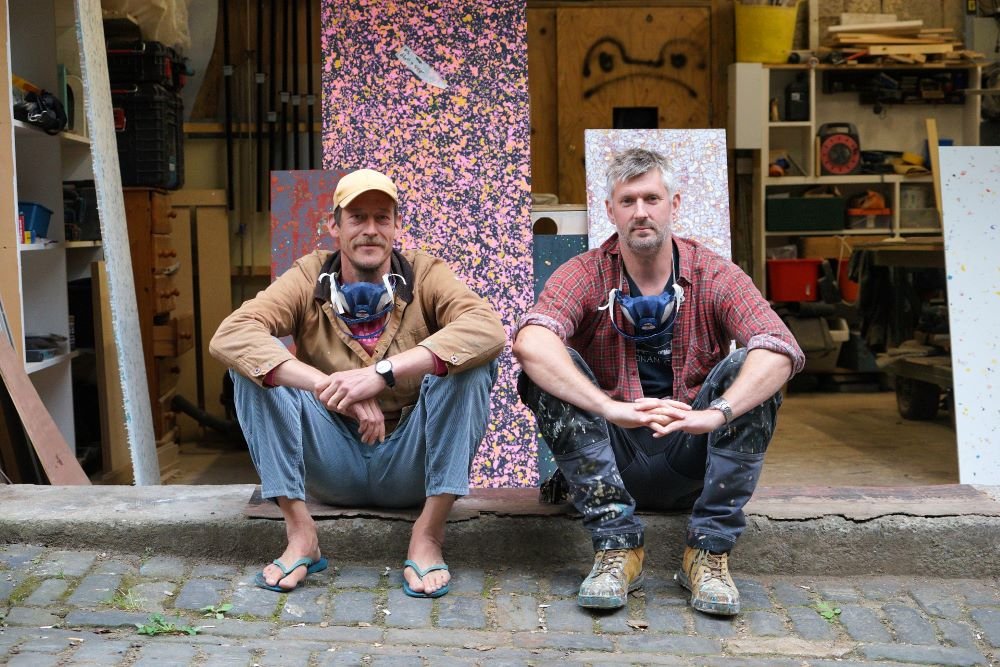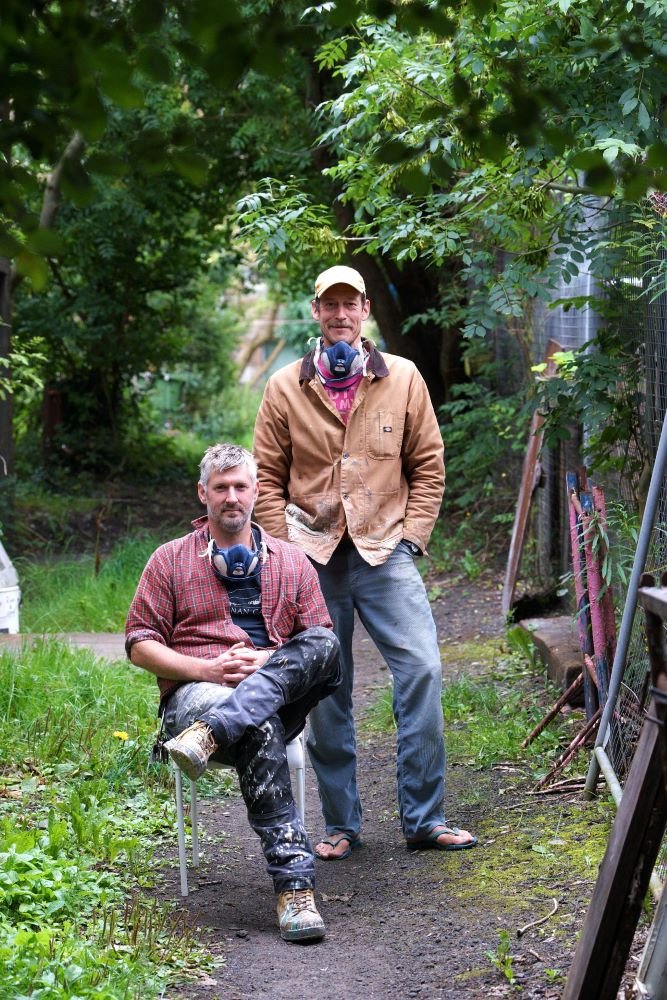Mirrl: Unveiling the Hidden Treasures of Traditional Japanese Artistry, Crafted by Govanhill Locals
“If you’re the only one making this unusual thing then there is a draw; no one else seems to be doing what we’re doing. You know, I think there are only really a handful of people in Japan that can make this thing.” - Lewis Harvey, MIRRL.
Simon Harlow (left) and Lewis Harvey (right).
By Devon McCole | Photos by Ian McLellan
Tucked away down an unassuming alley in Govanhill, best friends turned business partners, Simon Harlow and Lewis Harvey, create swirling motifs of colour for worktops and surfaces, inspired by a striking and increasingly rare, traditional Japanese decorative technique.
Eagle-eyed residents may have spotted their colourful, abstract designs in local businesses around the area, like Sacred Tum Tacos or The Bell Jar, who have sourced their respective shelving unit and bartop from the men behind Mirrl.
Simon and Lewis invited Greater Govanhill into their workshop to find out more about the mysterious designs, which are their best kept secret - so secret, in fact, that they were unable to disclose just how the designs are made. They did let us in on how they discovered the traditional Japanese technique, known as Tsugaru Nuri, which they spent years trying to recreate prior to launching their business in 2018.
“Two pals of ours from art school got married. She was Japanese. He's from Glasgow,” Simon recounted. “So we went out [to Japan] to the wedding and her family asked if I could stay on a bit longer so I could do a bit of joinery out there, which I thought was bloody amazing. Japanese joinery is phenomenal.
“While I was there, I was in the kitchen one time and opened one of the kitchen drawers. And I saw this pair of chopsticks with this most amazing pattern on them. It just stopped me still in my tracks. I was taken aback and thought ‘that's amazing!’ I work with materials for a living and I just couldn’t put my finger on what it was made of. It looked like it was made of some kind of shell, or ceramic. But it wasn’t that.
“It was completely mind blowing, otherworldly and incredibly beautiful. And that just stuck in my mind for years. I got back to Glasgow and it was just like an eye worm, you know, like how you get an ear worm with music. It was so beautiful. I was like, ‘oh, wouldn't it be amazing If you could create this stuff on scale?’”
Simon had been working as a sculpture fabricator before he finally decided to try and recreate what he saw in Japan. With no idea of how to make it, he decided to reverse engineer the technique using his skills as an artist and designer - an intricate process which took almost 15 years of trial and error before he was able to successfully recreate the unique design using resin.
Meanwhile, Lewis had been working odd jobs, including with Greenpeace, for many years. There, he repaired boats using the same material he would later work with at Mirrl – resin. After he stopped working for Greenpeace in 2014, he realised he wanted to work on something new and creative, and remembered Simon, who he had first met at art school in the 90s, and who had shown him his experiments with Tsugaru Nuri.
“I called Simon from Australia, and I said, ‘oh, you know, that thing you made, it's really amazing. I think there's something in it. I want to make it, I want to do that.’ So, we talked about doing it separately or together, and then as it turned out, about a year later, my dad who was living up in Skye fell ill. So I moved back to Scotland and then I was here.
“Then around 2016 we were like, ‘let's just do it.’ We founded the company in 2018. We launched it and all of a sudden it was this real thing. We've just been trying to survive and grow ever since.”
Lewis was drawn in by how rare the traditional design style is: “If you’re the only one making this unusual thing then there is a draw; no one else seems to be doing what we’re doing so it was perfect. You know, I think there are only really a handful of people in Japan that can make this thing.
“It was sort of seen as a really old and pointless thing to do, it was a tradition that seemed to be on its way out, people didn’t want to learn a ‘dying’ trade. But now I think that attitude is changing slightly. I think more people now are appreciating the time and effort that goes into the craft and admire that.”
For a business that runs out of a small workshop in a back alley in Govanhill, Mirrl has been remarkably successful, taking orders from across the globe. The pair say they ‘wear many different hats’, doing all of the work themselves; balancing making each mysterious and custom Mirrl design, whilst doing their own admin and running their website and social media accounts.
Lewis noted how the area has changed over the years and how Mirrl, although hidden away, fits in among the ‘chaos’ of Govanhill: “It's actually a funny thing working from Govanhill as a creative now. I think that Govanhill has changed so much. My dad was from around here, grew up near Queen’s Park. My grandparents used to live just about two streets over and I'd seen the place change a lot in many ways. I remember it being quite, like, middle-working class and then going down. And now there's lots of cool things happening around here.
“That's accelerated more in the last four years. It's quite odd because I think we feel like we've been here long before that. But our business, what we do, fits in better now, which is slightly odd. It always feels to me like there's always places that are consuming what's cool, and then there's the place where the cool stuff's been generated. It definitely feels like Govanhill is way more ahead of the curve than anywhere else in Glasgow. It's like all the weird stuff is happening here and then it's being picked up by the rest of the city.”
Simon, echoing his business partner, added: “It’s nice to work alongside so many other creative people here doing their own thing. We just absolutely love it here, it's just really diverse, there’s a lot of interesting stuff going on, and, you know, it's just constantly quite inspiring actually. Which is good for an artist.”
You can follow Mirrl on Instagram @mirrl_ltd or visit their website at www.mirrl.com

